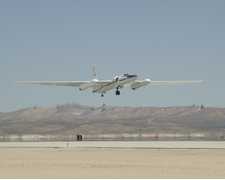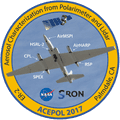The Spectropolarimeter for Planetary EXploration - Airborne (SPEX Airborne) is an airborne polarimeter developed by the Netherlands Institute for Space Research (SRON). It was created to validate and test the capabilities of the spaceborne SPEX instrument. SPEX Airborne measures radiance between 400 and 800 nm at a spectral resolution of 2 nm across nine viewing angles. It has a 6-degree cross-track swath and a spatial resolution of approximately 200 meters at nadir.

Instrument Details
- Optical/Photon
- Earth Science > Atmosphere > AerosolsEarth Science > Atmosphere > Aerosols > Aerosol Optical Depth/thicknessEarth Science > Atmosphere > Aerosols > Aerosol Particle Properties
- Troposphere
- 1.75 seconds
- 200 m
- 374.7 - 749.5 THz
- https://doi.org/10.1364/AO.58.005695
Otto Hasekamp
Otto Hasekamp
SRON
NWO, NASA, JPL, California Institute of Technology
Unpublished
 NASA Earth Resources-2 Aircraft 63 Campaigns · 109 Instruments |  Aerosol Characterization from Polarimeter and Lidar 2017 Western United States 1 Deployment · 6 Data Products
 Plankton, Aerosol, Cloud, ocean Ecosystem Postlaunch Airborne eXperiment 2024 Southern and Central California 1 Deployment · 14 Data Products
|
Filter data products from this instrument by specific campaigns, platforms, or formats.